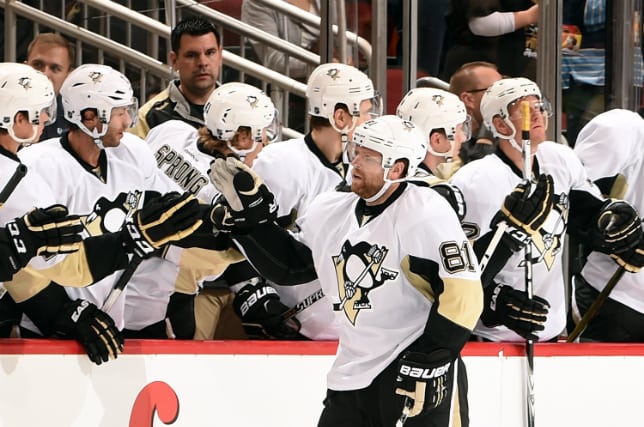
Thanks to no-trade and no-move clauses, players have their teams over a barrel, and puts small-market teams at a disadvantage.
Thanks to no-trade and no-move clauses, players have their teams over a barrel, and puts small-market teams at a disadvantage.

The hockey world – with the exception of those fans in Tampa Bay, I am certain – is downright giddy at the prospect of Steven Stamkos hitting unrestricted free agency next summer.
The last time a player of Stamkos’s stature was available was the summer of 2010 when Ilya Kovalchuk was a UFA after being traded from Atlanta to the New Jersey during the season. Kovalchuk signed a massive deal with Devils, caused more harm than good and abruptly left the organization to play in the KHL.
The Stamkos situation got me to thinking about how much fun it is to contemplate the notion of big-name players changing teams. And that led me to thinking about hockey’s trade market.
Thanks to no-trade and no-move clauses, players have their teams over a barrel. Players with those clauses in their contracts get to dictate where they will be shipped upon a fallout with their current teams.
That, in turn, puts teams in certain markets at an unfair advantage.
Though he led the Toronto Maple Leafs in scoring the past six seasons, it became apparent the organization would be better off without Phil Kessel regardless of what they got back in return. A case of addition by subtraction if there ever was one.
And yet Maple Leafs president Brendan Shanahan, who did the legwork on what eventually became a trade with the Pittsburgh Penguins, had his hands tied in terms of trying to make the best deal possible for his club.
Do you think there is any chance in hell that Kessel would have consented to a trade to Edmonton or Winnipeg? Two of the greatest hockey cities on the planet had no chance whatsoever of acquiring the gifted, albeit inconsistent, scorer from Toronto.
The NHL’s trade market has become boring and predictable. Because of the salary cap, quite often trades are dictated by money coming in being equal to money going out.
And, of course, the game’s best players who make the lion’s share of money allotted to a team’s salary structure, are often protected by no-trade and no-move clauses.
Gone are the days when a GM such as Harry Sinden could go to his star player, Phil Esposito, and deliver the news that he has been traded.
“Anywhere, but New York,” Esposito is reputed to have said to his boss.
“You’re going New York,” Sinden responded.
Nowadays Esposito would have laughed in Sinden’s face.
“The hell I’m going to New York,” would have been his response.
Thus, one of hockey’s biggest trades ever – Esposito and Carol Vadnais going from Boston to New York in exchange for Jean Ratelle, Brad Park and Joe Zanussi – would never have transpired.
Today’s trade deadline has become downright boring with mostly veteran players on expiring contracts being traded by non-playoff teams to playoff teams looking for depth. A rebuilding team like the Maple Leafs, for instance, are patiently developing their prospects in junior hockey and the minor leagues so for the past two seasons they have stocked their roster with inexpensive veterans on one-year deals that, if they perform well, they will possibly become attractive to contending teams seeking depth at the deadline.
Look at the players who changed teams at last year’s deadline: Chris Stewart, Torrey Mitchell, Max Talbot, Keith Yandle, Olli Jokinen, Rene Bourque, Braydon Coburn, Eric Cole, Lee Stempniak, Brett Connolly.
It goes on and on, but no stars were dealt because they are protected by no-trade, no move clauses. Perhaps the most intriguing player to move was prospect Anthony Duclair who went from the Rangers to the Arizona Coyotes. Time will tell if the Rangers blew that deal in an effort to add experience for a Stanley Cup run that fell short.
Aside from putting teams in certain markets at an unfair trading advantage, it also causes some teams to make bad financial decisions. Because they cannot attract big-name free agents, the Oilers have been forced to sign young players on expiring entry level contracts to lucrative long-term extensions. In those instances, there is no such thing as a bridge deal that allows a team, say the Montreal Canadiens, to keep a rising star, say P.K. Subban, from hitting it out of the park on his second contract. It buys time for the team to be sure this is the player they want to make a long-term commitment to.
The Oilers have been forced to pay more for young players who have not always panned out. That is bad business for the league as a whole because it drives up salaries all around.
Players deserve their contracts to be guaranteed, but not to be protected from being traded to a less-than-desirable location. As it stands, it is hard to imagine the NHL ever eliminating no-trade, no move clauses. But it sure is fun to imagine a world without them.
